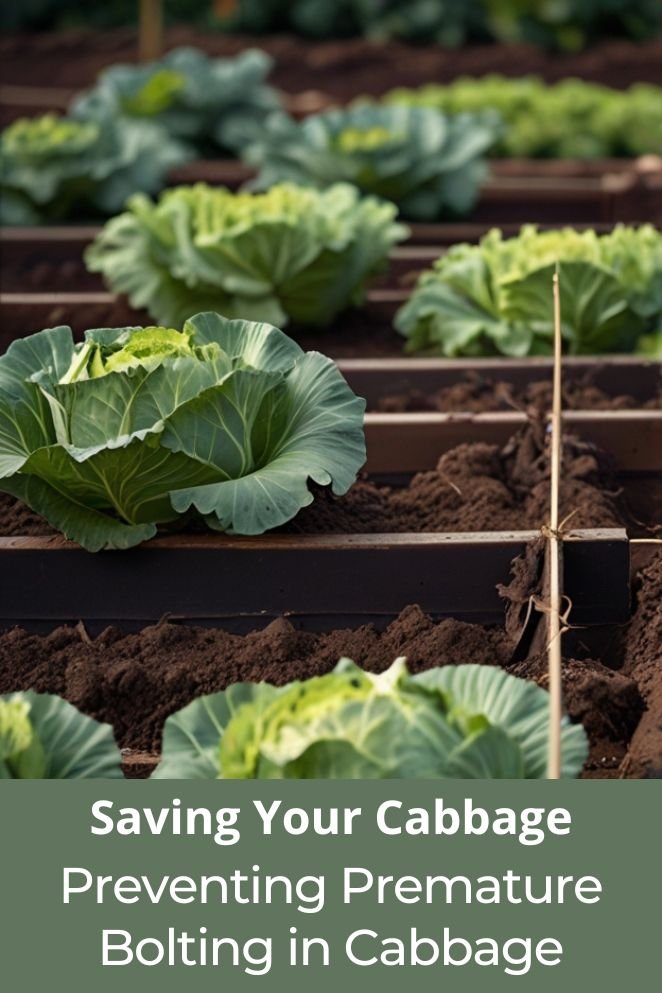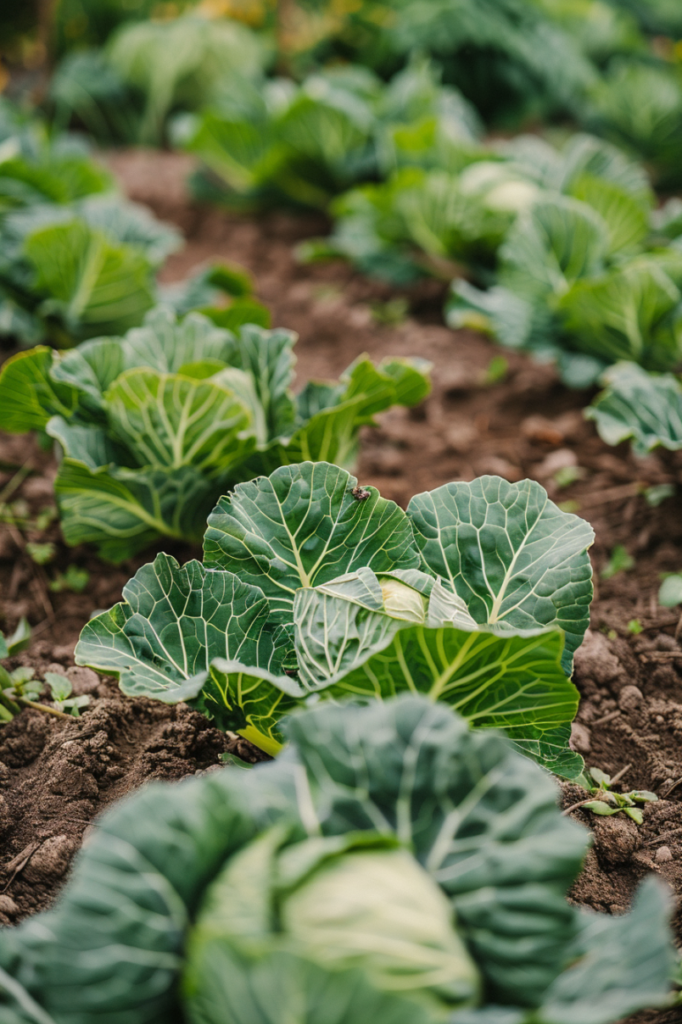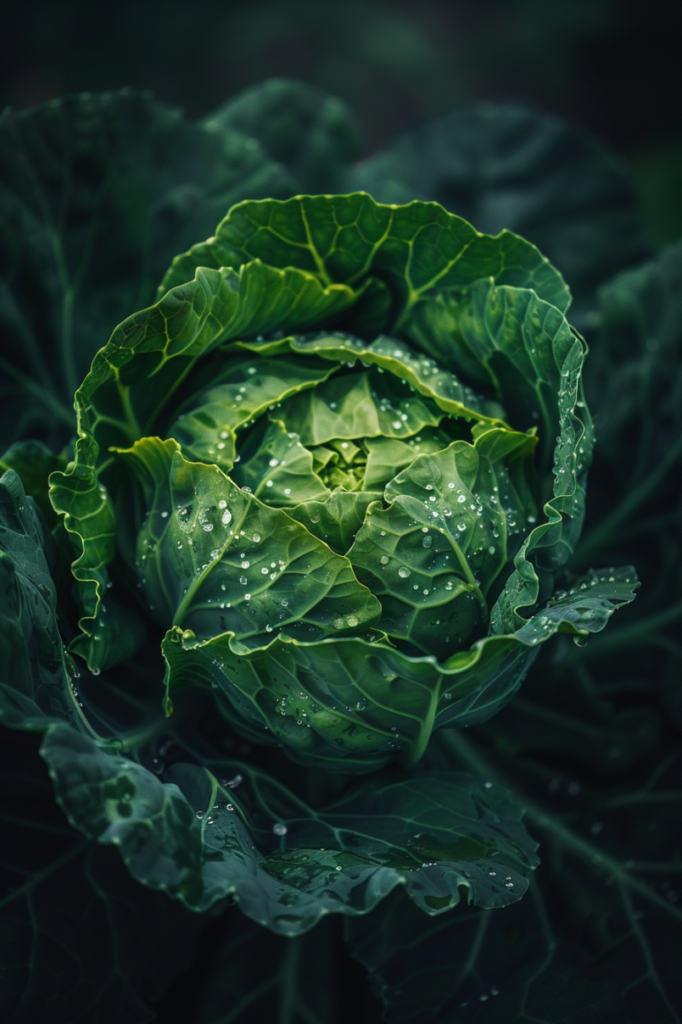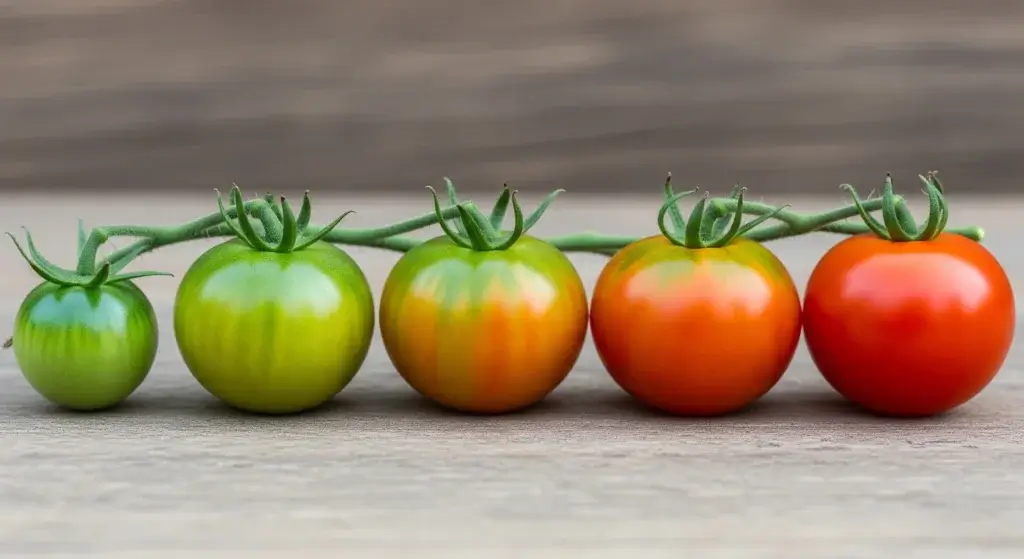
Premature bolting in cabbage can be frustrating for gardeners, as it can lead to bitter leaves and reduced yield.
Bolting is the process by which a cabbage plant flowers and goes to seed, which is triggered by changes in temperature, daylight, and stress.
In this blog post, we will discuss the causes of bolting, how to prevent it, and what to do if your cabbage has already bolted.
The Causes of Bolting
Bolting in cabbage, where the plant prematurely produces a flowering stalk, can be caused by various factors.
Understanding these causes can help gardeners prevent or minimize bolting in their cabbage crops.
- Read also: Nailing the Dirt: Ideal Soil Conditions for Luscious Cabbage
- Read also: From Seed to Supper: Mastering Organic Broccoli Care
Temperature
Cabbage thrives in cool weather, but extreme temperatures can trigger bolting.
Cold spells early in the cabbage’s growth can signal to the plant that it needs to reproduce before the weather becomes too harsh.
Conversely, hot spells later in the season can also induce bolting as a survival mechanism.
Daylight
Cabbage is sensitive to changes in day length, known as photoperiod.
Longer days signal to the plant that it’s time to transition to the flowering stage.
This response is an evolutionary adaptation that allows the plant to reproduce when environmental conditions are favorable.
However, for cabbage growers, premature flowering (bolting) can significantly reduce crop yield.
Stress
Various stressors can trigger bolting in cabbage plants.
Transplant shock, caused by moving seedlings from one environment to another, can disrupt the plant’s growth cycle and induce bolting.
Nutrient deficiencies, particularly nitrogen, can also stress the plant and prompt it to bolt in an attempt to reproduce before conditions worsen.
Additionally, underwatering or inconsistent moisture levels can stress cabbage plants, leading to bolting as a survival response.
Variety
Some cabbage varieties are more resistant to bolting than others.
When selecting cabbage seeds or seedlings, choosing varieties known for their bolt resistance can help mitigate the risk of bolting in the garden.
These varieties have been bred specifically to withstand environmental triggers that typically induce bolting, making them more reliable options for growers seeking to avoid premature flowering in their cabbage crops.

Preventing Premature Bolting
Preventing premature bolting in cabbage requires careful planning and attention to detail throughout the growing process.
Here are some practical tips to help gardeners avoid bolting and promote healthy cabbage growth:
Planting timing
Cabbage thrives in cool weather, so it’s essential to plant at the right time to minimize the risk of bolting.
Aim to plant cabbage in the late spring or early fall when temperatures are moderate and day length is conducive to vegetative growth.
By avoiding extremes in temperature and day length, you can create optimal conditions for cabbage development and reduce the likelihood of premature bolting.
Choosing the right variety
Selecting cabbage varieties bred for bolt resistance is crucial, especially if you live in an area with unpredictable weather patterns.
These varieties have been specifically bred to withstand environmental stressors that can trigger bolting, providing added insurance against premature flowering.
Be sure to research and choose varieties that are well-suited to your climate and growing conditions for the best results.
Seedling care
Proper care of cabbage seedlings is essential for preventing bolting later in the growing season.
Avoid over-fertilizing seedlings, as excessive nitrogen can encourage rapid growth and increase the risk of bolting.
Additionally, harden off seedlings properly before transplanting them into the garden.
Gradually expose them to outdoor conditions, such as sunlight and fluctuating temperatures, to help them acclimate and reduce the likelihood of transplant shock.
Plant management
Once cabbage plants are in the garden, it’s essential to provide consistent care to promote healthy growth and minimize stress.
Maintain consistent moisture levels in the soil by watering regularly, especially during dry periods.
Ensure that cabbage plants receive adequate nutrients by fertilizing according to soil test recommendations or using organic amendments.
Avoid disturbing the root system unnecessarily to prevent transplant shock, and handle plants gently during transplanting and maintenance activities.
Row covers
Consider using row covers to protect young cabbage plants from sudden changes in temperature or adverse weather conditions.
Row covers provide a physical barrier that helps retain heat and protect plants from cold snaps, frost, or excessive heat.
They can also deter pests and provide some shade, creating a more favorable microclimate for cabbage growth.
Be sure to remove row covers once temperatures stabilize and plants are well-established to prevent overheating and ensure proper airflow.

Dealing with Bolted Cabbage
When cabbage bolts, forming a tall flowering stalk, it may seem like all is lost for the crop.
However, there are still ways to salvage and utilize bolted cabbage plants effectively:
Harvesting
Despite bolting, the leaves of cabbage can still be harvested and used in various culinary applications.
While the leaves may become slightly more bitter as the plant diverts its energy towards flowering, they are still edible for a short period.
Harvesting bolted cabbage leaves promptly allows you to make the most of the remaining yield before the bitterness becomes too pronounced.
Using bolted cabbage
Bolted cabbage leaves can be incorporated into a variety of dishes to minimize waste and maximize flavor.
Consider using them in stir-fries, soups, stews, or even fermenting them to make kimchi.
Cooking can help mellow the bitterness of the leaves, making them more palatable and enjoyable.
By creatively incorporating bolted cabbage into your meals, you can still derive nutritional benefits from the crop despite its altered state.
Composting
If your cabbage plants have bolted extensively and are no longer suitable for culinary use, consider composting them instead.
Adding bolted cabbage plants to your compost pile provides a valuable source of organic matter and nutrients that can enrich your soil.
As the cabbage plants decompose, they release nutrients back into the soil, contributing to its fertility and overall health.
Composting bolted cabbage is an environmentally friendly way to recycle plant material and improve soil quality for future crops.

- Read also: A Complete Guide: Troubleshooting Common Cucumber Problems
- Read also: Broccoli Care Mistakes: Master the Art of Growing Your Broccoli
Conclusion
Premature bolting in cabbage can be prevented by planting at the right time, choosing bolt-resistant varieties, and providing proper care for seedlings and plants.
If your cabbage has already bolted, you can still harvest the leaves for a short period or use them in cooking.
Remember to maintain consistent moisture and nutrients to prevent bolting in the future.



